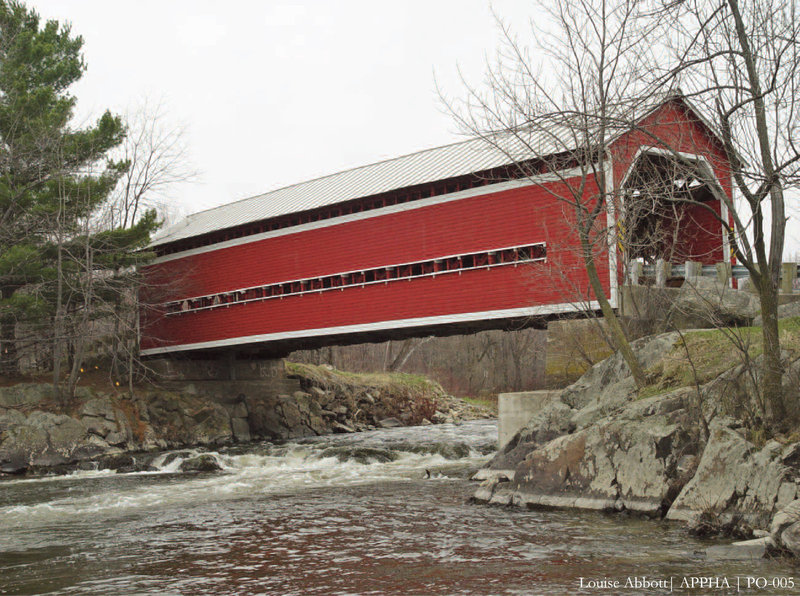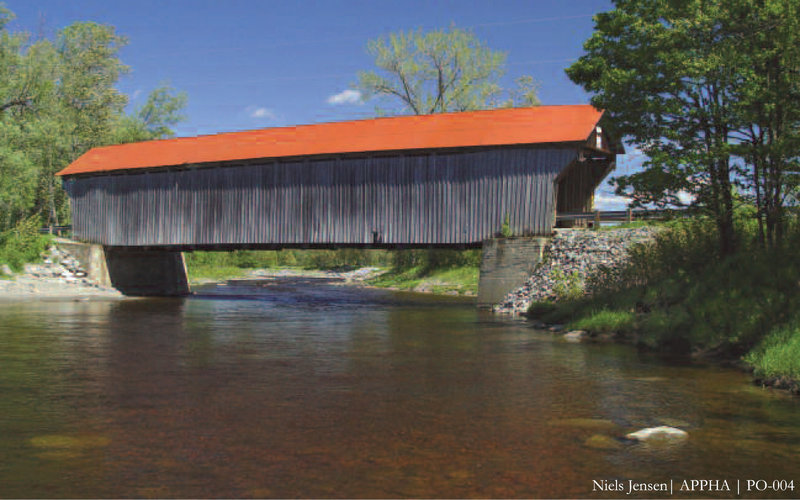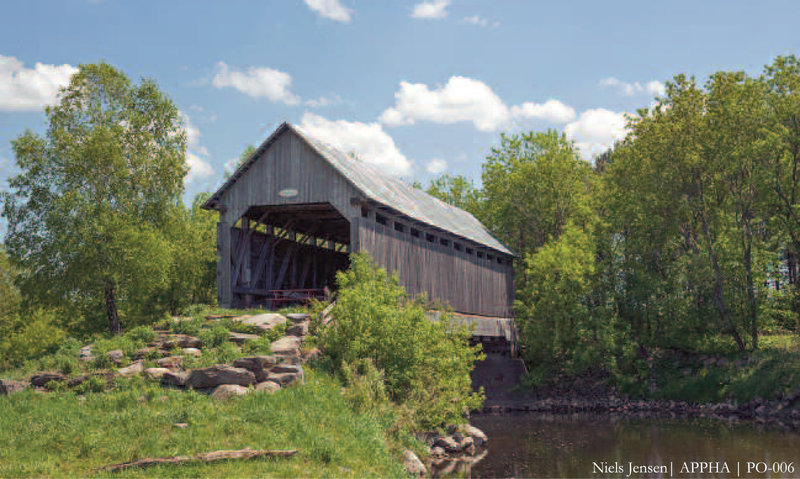La construction d’un pont couvert requerrait des investissements importants. Parfois un individu, par exemple le propriétaire d’un moulin à eau qui voulait ainsi donner un accès plus facile à ses clients, finançait sa construction. Plus fréquemment, un groupe de gens d’affaires réunissait les fonds nécessaires et facturait un droit de passage pour se rembourser.
Les municipalités ont aussi financé leur construction. Au cours des années 1890, le département de la Colonisation du Québec a pris en charge leur édification et cet engagement s’est poursuivi jusque dans les années 1950. Ces ponts étaient peints couleur rouge sang. Aujourd’hui, les ponts couverts appartiennent aux municipalités. Toutefois, Transports Québec est responsable de l’inspection et de l’entretien des ponts couverts intégrés dans le système routier (sauf ceux des grandes villes).
Covered bridges required a substantial outlay of funds. Sometimes an individual—say, a mill owner who wanted to give patrons easy access to his property—financed the construction. More often a group of local businessmen raised the funds, and, to regain their investment, charged a toll.
Municipal governments also subsidized the erection of public covered bridges. In the 1890s, the provincial Department of Colonization took charge of them and continued to build them until the 1950s, usually painting the siding oxblood red. Today, municipalities own public covered bridges, but the Quebec Ministry of Transport is responsible for inspecting and repairing all those that are in road service (except in cities or large towns).
Par leurs variations dans les modes de construction et leurs dimensions, chaque pont couvert est unique. Les constructeurs de ponts des Cantons-de-l’Est et du reste du Québec ont tendance à utiliser exclusivement du bois local, comme la pruche pour la structure et le cèdre pour le parement et les bardeaux du toit. Le pont Balthazar a été construit sur la rivière Yamaska à Brigham (Comté de Missisquoi) en 1932. Il est toujours en service.
Because of the differences in their architectural style and overall dimensions, each covered bridge was distinctive. Bridge builders in the Eastern Townships and elsewhere in Quebec tended to rely on locally available wood, such as hemlock, for the structural members, and cedar for the siding and the roof shingles. The Balthazar Bridge was built over the Yamaska River in Brigham (Missisquoi County) in 1932. It is still in service.
Le pont McDermott date de 1886 et franchit la rivière North Eaton à Cookshire-Eaton (Comté de Compton). Il est ouvert à la circulation routière durant l’été. C’est l’un des deux ponts couverts de la municipalité, l’autre étant le pont John-Cook.
The McDermott Bridge dates from 1886 and spans the North Eaton River in Cookshire-Eaton (Compton County). It remains open to vehicular traffic seasonally. It is one of two covered bridges in the municipality; the other is the John Cook Bridge.
Le pont Drouin traverse la rivière Coaticook à Compton (Comté de Compton). Construit en 1889, il se dénommait le pont Spafford, du nom d’une famille locale. Mis au rencart à la fin des années 1970, un comité de citoyens a recueilli des fonds pour le remettre en état avec la collaboration financière du gouvernement du Québec en 2004-2005.
The Drouin Bridge spans the Coaticook River in Compton (Compton County.) It was built in 1889 and originally named the Spafford Bridge after a local family. It was decommissioned in the late 1970s, but a citizens’ committee raised funds, and the Quebec government collaborated to finance major repairs in 2004-2005.


